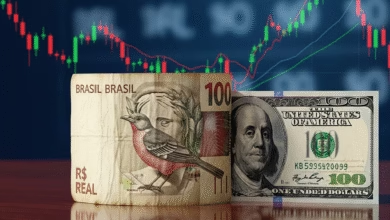Have you ever heard of the herd effect?
Learn what the herd effect is and how even you can fall for it

In the world of finance, it’s easy to get caught up in the latest buzz. A hot stock is soaring, a new cryptocurrency is minted, and suddenly, it seems like everyone you know is talking about it. There’s a powerful, almost primal urge to jump in, a fear that if you don’t act now, you’ll be left behind watching everyone else get rich. This phenomenon has a name: herd mentality. It’s one of the most powerful and potentially destructive forces in investing, capable of creating massive speculative bubbles and wiping out fortunes when they burst.
Understanding this deep-seated behavioral bias is the first step toward protecting your portfolio and making rational, independent decisions aligned with your financial goals. This in-depth guide will explore the psychology behind herd behavior, examine its devastating impact throughout financial history, and provide you with actionable strategies to forge your own path to long-term wealth.
What Exactly Is Herd Mentality in Finance?

Herd mentality, also known as herding or mob mentality, is the tendency for individuals to mimic the actions and decisions of a larger group, often abandoning their own independent analysis in the process. In financial markets, this translates to investors buying or selling assets simply because many others are doing so. Instead of basing decisions on fundamental analysis—like a company’s health, earnings, and growth prospects—investors who follow the herd are driven by collective emotion and social pressure.
This behavior isn’t born from a lack of intelligence. It’s a cognitive shortcut rooted deep in our evolutionary past, where conforming to the group often meant survival. In the complex and often uncertain world of investing, it can feel safer and easier to trust the “wisdom of the crowd.” However, when it comes to your money, the crowd is often wrong, reacting impulsively to market noise rather than sticking to a sound, long-term strategy. The most common and damaging outcome of this behavior is the classic investor mistake: buying high and selling low.
The Psychology Behind the Herd: Why Do We Follow the Crowd?
To effectively combat herd mentality, it’s essential to understand the powerful psychological triggers that drive it. These are not character flaws but universal human biases that can influence anyone, from novice investors to seasoned professionals.
The Overwhelming Fear of Missing Out (FOMO)
FOMO is perhaps the most potent driver of financial herds. When an asset’s price is skyrocketing, social media, news headlines, and conversations with friends are filled with stories of incredible gains. This creates a powerful anxiety that you are missing out on an easy opportunity to make money. This fear can override rational thought, compelling you to buy into an asset at a dangerously inflated price, often just as the initial smart money is beginning to sell.
Social Proof: The Belief in Collective Wisdom
Social proof is the psychological concept that people assume the actions of others reflect the correct behavior for a given situation. When we see a large number of people investing in a particular stock or sector, we naturally assume they must know something we don’t. This belief can provide a false sense of security, making a risky, speculative bet feel like a safe, validated choice. The more people who join in, the stronger the social proof becomes, creating a self-reinforcing cycle.
Confirmation Bias: Seeking Information That Supports Our Desires
Once we start considering joining the herd, confirmation bias kicks in. This is our tendency to actively seek out information that confirms our pre-existing beliefs while ignoring any data that contradicts them. If you’re tempted to buy a hyped-up tech stock, you’ll likely focus on the positive news articles and bullish analyst reports, while dismissing warnings about its extreme valuation or lack of profitability. This creates an echo chamber that reinforces the decision to follow the crowd.
Information Cascades: When Observation Replaces Analysis
In complex situations like financial markets, individuals often make decisions based on observing the actions of others, assuming those actions are based on good information. This can lead to an “information cascade,” where a few initial decisions trigger a chain reaction of imitation. Subsequent investors may completely disregard their own private information or research, figuring it’s easier and safer to just do what everyone else is doing.
A Trail of Tears: Historical Examples of Herd-Driven Bubbles

History is littered with examples of financial bubbles fueled by herd mentality. While the assets change, the human behavior remains remarkably consistent.
The Dot-Com Bubble (Late 1990s – 2000)
The late 1990s saw the birth of the commercial internet, a revolutionary technology that sparked a speculative frenzy. Investors, swept up in the belief that any company with a “.com” in its name was destined for greatness, poured money into internet startups. Valuations soared to astronomical levels for companies with little to no revenue, let alone profits. The herd believed in a “new economy” where traditional metrics no longer applied. When the bubble burst in 2000-2001, the Nasdaq index plummeted nearly 80%, and trillions of dollars in market value evaporated, wiping out countless investors who had bought at the peak of the hype.
The U.S. Housing Market Crash (2008)
A more recent and devastating example was the housing bubble of the mid-2000s. A widespread belief that “real estate prices always go up” fueled a national herd mentality. Consumers took on subprime mortgages they couldn’t afford, and banks bundled these risky loans into complex financial instruments. The collective belief in ever-rising home prices created a massive, unsustainable bubble. When the market inevitably turned and prices began to fall, it triggered a wave of foreclosures and a global financial crisis, the worst since the Great Depression.
Cryptocurrency Mania (e.g., Bitcoin 2017 & 2021)
The volatile world of cryptocurrency is a modern breeding ground for herd behavior. Fueled by social media hype and stories of overnight millionaires, assets like Bitcoin have experienced massive price surges. During these periods, hordes of retail investors, driven by intense FOMO, rush into the market. This buying frenzy pushes prices to unsustainable highs, inevitably followed by dramatic crashes that inflict severe losses on those who joined the stampede late.
How to Stand Apart: Strategies to Avoid the Herd Mentality
Avoiding the powerful pull of the herd requires discipline, a clear strategy, and a commitment to independent thought. Here are practical steps you can take to protect yourself and make smarter investment decisions.
1. Establish a Clear and Personal Financial Plan
Before you invest a single dollar, you need a roadmap. What are your long-term goals (retirement, a house down payment)? What is your time horizon? What is your genuine tolerance for risk? A well-defined financial plan acts as your anchor. When the market becomes turbulent and the crowd starts to panic or stampede into a hot trend, your plan will remind you of your own objectives, helping you to stay the course and ignore the noise.
2. Do Your Own Research and Rely on Fundamentals
The ultimate antidote to herd behavior is independent thinking. Learn the basics of fundamental analysis. Instead of buying a stock because it’s popular, investigate the company behind it. Does it have a strong balance sheet? Is it profitable? Does it have a sustainable competitive advantage? By focusing on the intrinsic value of an asset rather than its price momentum, you base your decisions on data and logic, not on crowd emotion.
3. Practice a Disciplined, Long-Term Approach
Successful investing is typically a marathon, not a sprint. Adopt a “buy and hold” mindset, focusing on acquiring quality assets and holding them for years, allowing the power of compounding to work in your favor. This long-term perspective naturally insulates you from the short-term fads and panics that drive the herd. Strategies like dollar-cost averaging—investing a fixed amount of money at regular intervals—can further remove emotion by automating your investment process.
4. Diversify Your Portfolio Across Asset Classes
Don’t put all your eggs in one basket, especially not the basket everyone else is currently chasing. A properly diversified portfolio, spread across different asset classes (stocks, bonds, real estate, etc.) and geographic regions, can help mitigate risk. When one part of the market is caught in a speculative frenzy or a sharp downturn, other parts of your portfolio can provide stability, reducing the temptation to make rash, herd-driven decisions.
5. Limit Your Exposure to Financial Media and Market Noise
Constant exposure to breaking financial news and the 24/7 commentary on social media can amplify feelings of anxiety and FOMO. While staying informed is important, it’s crucial to filter out the noise. Make a conscious effort to limit how often you check your portfolio. Instead of reacting to daily market fluctuations, consider reviewing your investments quarterly or semi-annually to ensure they remain aligned with your long-term plan.
Trust Your Plan, Not the Crowd

The urge to follow the herd is a powerful, innate human instinct. Recognizing this bias is the most critical step toward overcoming it. By building a solid financial plan, committing to independent research, and maintaining a disciplined, long-term perspective, you can protect yourself from the emotional stampedes that so often lead to financial ruin. True financial success is rarely found in chasing the latest trend; it’s forged through patience, diligence, and the courage to think for yourself.





